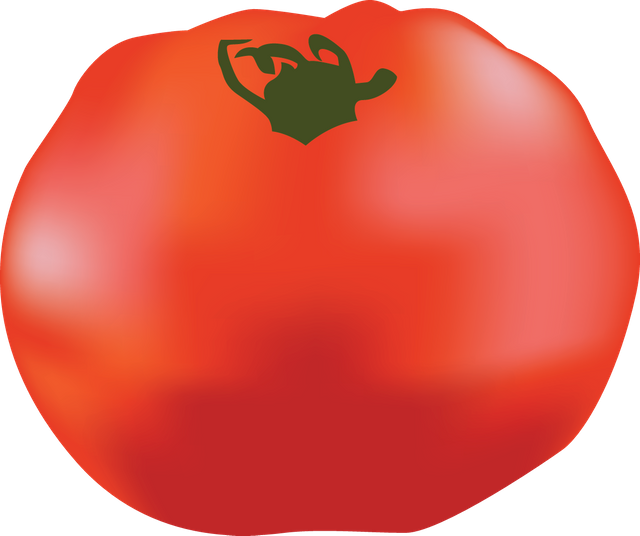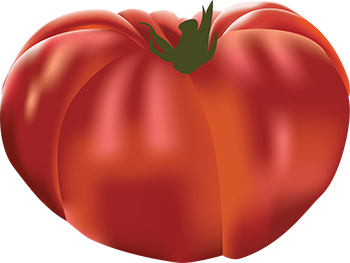Popular Tomato guide Part 4
If you're new to gardening you might be surprised to learn just how many tomato varieties you have to choose from. Not to worry though, we're highlighting 31 different tomatoes to get you ready for the garden season. Whether you're a experienced gardener or just getting your toes wet, you'll be sure to find and exciting assortment to choose from.
If you enjoy reading about these tomatoes and want even more varieties, have look back at part 1, part 2, and part 3 where we feature a total of 18 other varieties plus give you helpful hints about planting and caring for your fruit.

Oxheart Red
Matures: 90 days
Fruit Size: 10 – 16 oz.
Plant Type: Determinate
Genetic Type: Heirloom
You won't go hungry with this tomato because the Oxheart Red is known for bearing exceptionally large fruit. The refreshing flavour has a simple sweetness that is well suited to bruschetta, and salsa while the sheer size of this tomato is suited well for stuffing. Let your imagination run wild in the kitchen with this meaty delight.

Patio
Matures: 70 days
Fruit Size: 3 – 4 oz.
Plant Type: Determinate
Genetic Type: Hybrid
As the name suggests, the Patio Tomato is a compact variety that's well suited to small spaces. They're typically great producers and leave you with a bounty of delicious small fruit. Their fruit size makes them ideal for both snacking and using in the kitchen. If you enjoy a sweeter tomato, look for patio varieties with red or pink skin.

Red Grape
Matures: 60 days
Fruit Size: ½” to ¾”
Plant Type: Semi-Determinate
Genetic Type: Open Pollinated
Grape tomatoes are the hardy cousin to the beloved sweet-tasting cherries. Their robust skin make them a supermarket go-to for their ability to transport well. While the flavour between the two is similar, the grape tomato is known to be meatier and better suited to sauces than fresh eating. That said, there is no such thing as Tomato Police to keep you from eating these bite-sized fruits any way you want to.

San Marzano
Matures: 85
Fruit Size: 4 oz.
Plant Type: Indeterminate
Genetic Type: Heirloom
Apparently, true San Marzano tomatoes are grown in a specific region of Italy. Here, the volcanic soils offer nutrients that are said to affect the tomatoes flavour, making the fruit sweeter and less acidic. While you may not have access to volcanic soil, there are plenty of ways you can enrich your soil to produce delectable tomatoes. The San Marzano are a favourite in Italian kitchens for making the best sauces and bruschetta.

Steakhouse
Matures: 75 - 80 days
Fruit Size: 24 to 48 oz.
Plant Type: Indeterminate
Genetic Type: Hybrid
If you want an abundance of tomatoes, the Steakhouse is a great option. Weighing in between 24 and 48 oz. these fruit are enormous. You'll want to harvest your Steakhouse tomatoes often to avoid overloading your plant, but be sure to pick at peak ripeness when the colour is bright and the fruit is firm. If you want to experiment with sauces, juice, paste, soups, and stews you'll have no shortage of fruit to do so.

Striped German
Matures: 78 days
Fruit Size: 12 oz.
Plant Type: Indeterminate
Genetic Type: Heirloom
The Striped German tomato is a treat for both the eyes and taste buds. This popular bi-coloured tomato is known for its meaty flesh and tropical flavour. It's generous yield and hefty fruit will have you harvesting and eating all season long. A great canning tomato, this fruit will add a brightness to your sauces and cooked dishes.
Tomato Pests and Diseases
Getting into all the specific tomato diseases and pests is beyond the scope of this article, but I think it is worthwhile to cover some of the basic things you can do to protect your plants. As with taking care of your own body, it is a good idea to prevent or mitigate diseases and ailments before they get too out of hand.
Having healthy vigorous tomato plants goes a long way to overcoming diseases and pests and rich healthy soil high in organic matter is a good first step. Compost, manure, and other bulky organic amendments will help as will mulching your garden with plant material, like straw or wood chips. Keep in mind that one of the few drawbacks to mulch is that it can harbor slugs.
A practice that can really cut down on diseases is to remove the bottom branches of the tomato plants so that they don't touch the soil. This will provide better airflow under the plants and prevent bacteria and funguses in the soil from easily transferring to your plants. If possible, try and water the soil directly rather than spraying your entire plant with water; dry leaves are less likely to get infected with fungus.
Conducting a soil test may also be worthwhile to do. A home soil test kit will give you an idea of soil pH, and the levels of Nitrogen, phosphorus, and potassium. Soil doesn't always need to be prefect but if things are too far out of whack at least you will know and can take corrective action.
Tomatoes prefer a pH of around 6.8 which is just slightly acidic. A neutral pH is 7.0. If the pH gets too high or two low certain minerals become inaccessible and your plants will suffer from deficiencies even if the soil has the minerals.
Consider inoculating your plants with mycorrhizal fungi. These fungi form a symbiotic relationship with plant roots and will give the tomato nutrients it needs in return for something the tomato can provide the fungus like carbohydrates. There are products you can buy that contain the mycorrhizal spores. Many people, however, will just collect soil and organic matter from the forest floor as it often contain beneficial fungi naturally.
Pests will seem to do much less damage if your tomato plants are healthy and growing rapidly. This is one of the most important steps in protecting you plants but there are other things you can do to help protect them. Having many diverse plants in and around your garden is a good idea, both perennials and annuals. This will provide plenty if habitat for predator insects and also confuse and distract insects that like munching on tomatoes.
There are endless beneficial plants to have in and around the garden. Comfrey is always a nice perennial to have around the garden. Not only can you make a great fertilizer from comfrey, it is also a preferred overwintering plant for predator insects.
Basil is a good companion plant for your tomatoes as well. It's strong scent can confuse and repel predator insects particularly spider mites, aphids, hornworms, and white flies while at the same time attracting beneficial insects like bees and other pollinators. Best of all, basil and tomatoes go well together in the kitchen too.
All photos and illustrations in this post are original work by Mrs. Canadian Renegade.

Tomato education is very good. There is some learning in every part of the studying.
Thanks, I am glad you liked it.
i really like your gardening tips sir... ☺👍
Loved this :) I featured it in my new curation vlog series, it's on my profile if you want to check it out :)
I will!
Interesting article:) I'm growing tomatoes in 22" containers for the second year in a row, wondering if I should put a basil plant in each one. Have you grown the two together in confined spaces?
No I haven't done much in pots, I am not sure if they would compete with each other but I kind of doubt it would be a problem. You could always prune the basil often to limit it's size.
If you are worried I think you could get similar benefits but putting a few separate pots planted with basil near the tomatoes.
I might try both and see what works, thanks! I'd like to grow enough basil this year to make homemade pesto:-)
I love pesto! It is an under appreciated condiment/food.
Congratulations! This post has been added to our growing directory of Steemit "how to" posts for the Homesteading/Survival/Foraging/Prepper communities. If you haven't done so already, you can claim your badge along with the code to add to your posts to let the world know you have chosen to help others Survive, Thrive and be Prepared! Click here to get the code
I have gardened for most of my life and grown tomatoes for most seasons but I really enjoyed your Tomato articles thanks and keep on writing I really enjoy reading everything.
You're welcome. Thanks for the support!
I'd like to have a look at my post and comment: https://steemit.com/food/@marcuz/web-2018-2-4-9-24-38